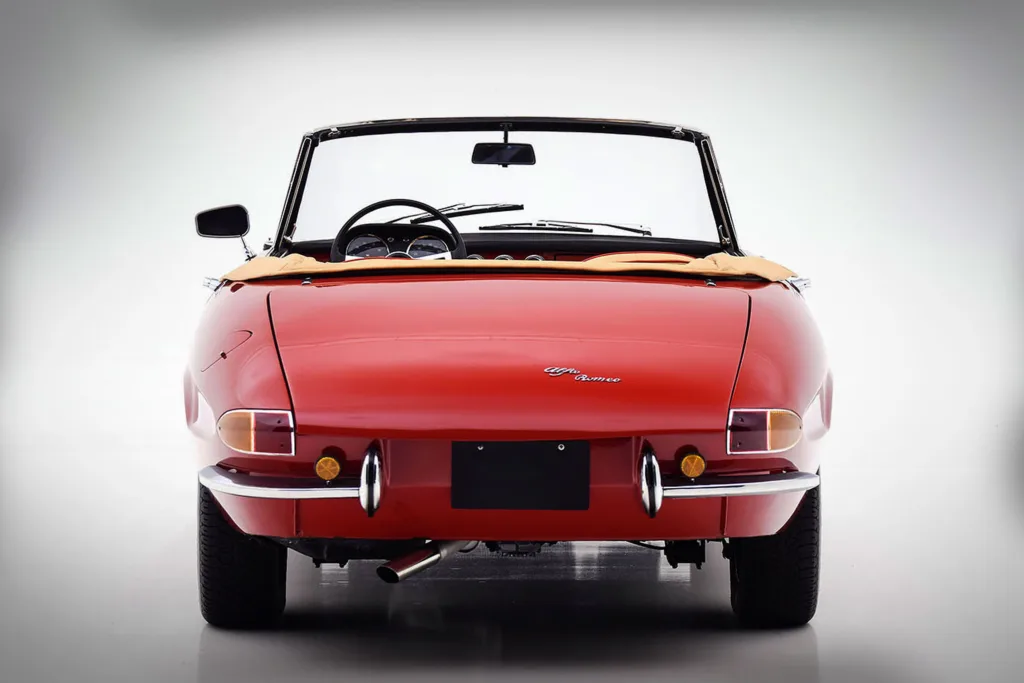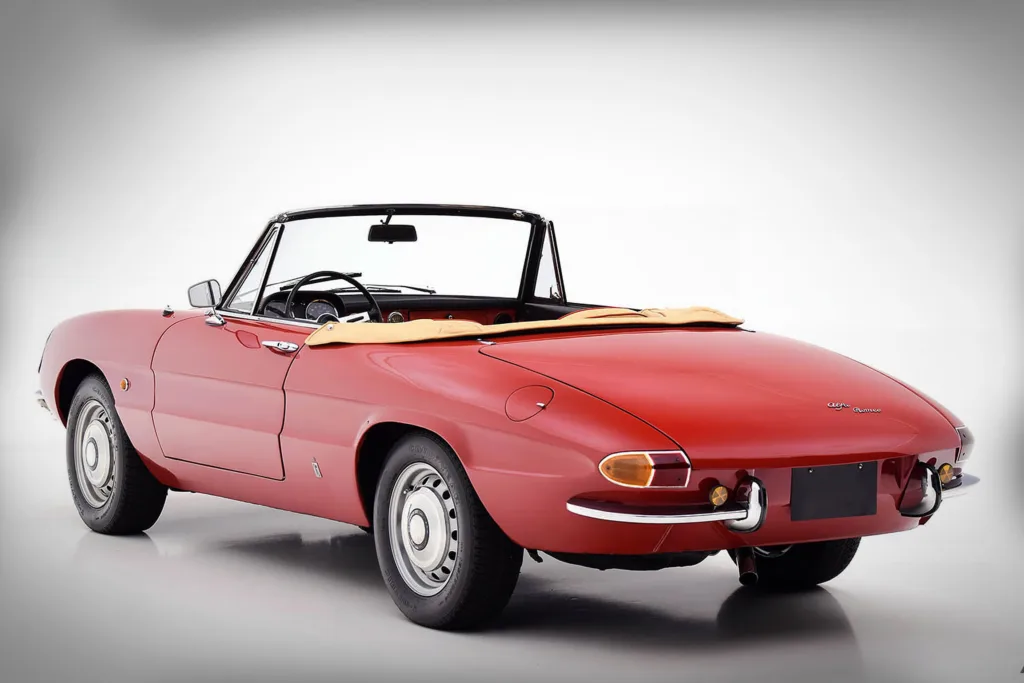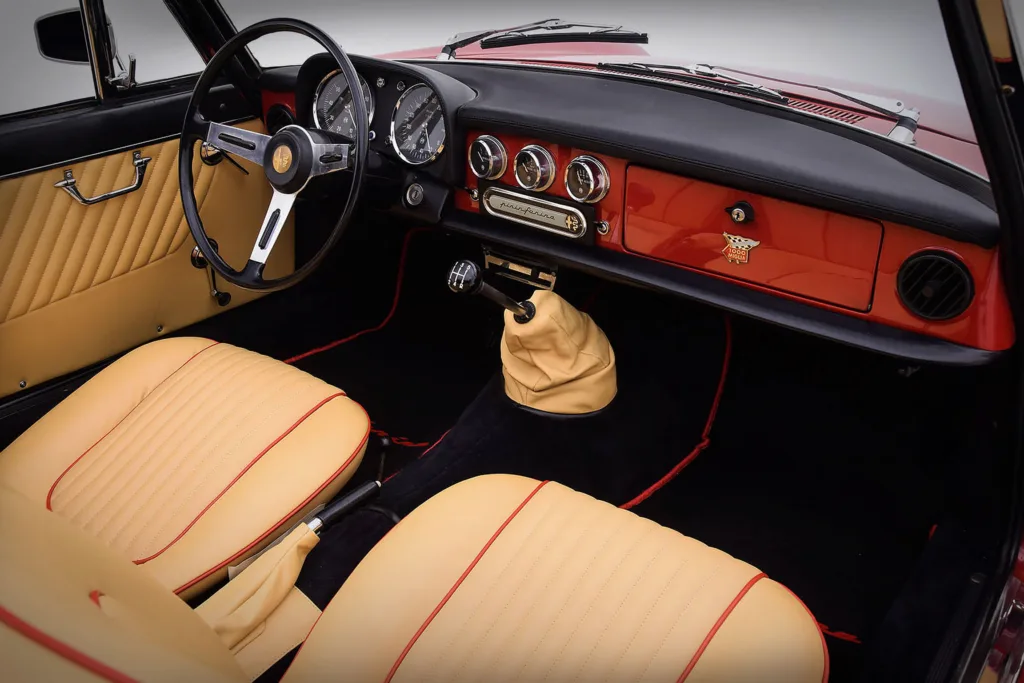The Alfa Romeo Spider 1600 Duetto, introduced at the 1966 Geneva Motor Show, stands as one of the most iconic and influential roadsters in automotive history, blending Italian design with engineering excellence to leave a profound mark on sports car culture worldwide.

Origins and Impact
When Alfa Romeo launched the Spider 1600 Duetto, it was intended as the replacement for the beloved Giulietta Spider, a car renowned for its playful spirit and Italian flair. The Duetto quickly surged in popularity, especially after its starring role in the classic film “The Graduate,” driven by Dustin Hoffman’s character—a moment that forever linked the car’s image to Hollywood nostalgia and youthful rebellion. This exposure helped solidify the Duetto’s reputation, establishing it as a symbol of Italian sophistication and driving joy.

Design and Aerodynamics
The Spider 1600 Duetto’s design was shaped by the legendary studio Pininfarina, founded by Battista “Pinin” Farina, whose influence on automotive aesthetics remains unrivaled. The roadster’s elongated, rounded tail and smooth, flowing lines marked a significant departure from the traditional, compact look of its predecessor. While the unique “Osso di Seppia” (cuttlefish bone) shape turned heads for its modern appeal, it unfortunately suffered from aerodynamic inefficiencies, particularly a lift at high speeds, prompting later models to transition to more functional tail profiles known as “Kamm” tails.

Engine and Technical Features
At its core, the Spider 1600 Duetto featured Alfa Romeo’s legendary twin-cam inline four-cylinder engine, displacing 1,570 cm³ and generating 110 horsepower—an impressive figure for a small roadster of its era. The engine’s twin overhead camshaft configuration was derived from Alfa’s racing pedigree, and paired with twin Weber carburetors, it delivered spirited performance and sonorous exhaust notes. Despite some added weight from simplified running gear designed for durability, the Duetto was still capable of reaching 185 km/h (115 mph), showcasing the brand’s commitment to blending reliability and sporting character.

The car was also fitted with a five-speed manual transmission—a feature not universal among competitors at the time—which offered precise control and engagement for spirited driving. Its front double wishbone suspension and rear live axle design provided balanced handling and comfort, making it suitable for both city cruising and enthusiastic cornering.

Model Evolution and Legacy
The Spider’s initial success led Alfa Romeo to further evolve the model throughout its production run. In 1968, the engine displacement was increased to 1,750 cm³, with the car rebadged as the Giulia Spider Veloce and later simply as Spider Veloce. Technical improvements included the introduction of fuel injection in certain export models and continual refinements to the suspension and brakes. Ultimately, the power plant was enlarged again in 1971 to a 2.0-liter unit, reflecting the market’s demand for greater performance.

Remarkably, the Spider remained in production—with successive generational updates and facelifts—until 1993, making it one of Alfa Romeo’s longest-running models. Over its nearly three-decade lifespan, the Spider served as a canvas for automotive innovation, hosting a variety of mechanical and styling changes to keep pace with evolving tastes and regulations.

Cultural and Historic Significance
The Alfa Romeo Spider 1600 Duetto not only helped pioneer the Italian roadster concept but also influenced countless designers and competitors with its blend of beauty, usability, and sporting heritage. Its persistent popularity among collectors and enthusiasts speaks to its timeless appeal—whether appreciated for its historical importance, racing DNA, or cinematic legacy.

Restored examples and survivor cars remain sought after worldwide, representing the quintessential driving experience of open-top motoring: direct steering, throaty engine notes, and the tactile pleasure of shifting gears through winding countryside roads.
The Duetto’s contribution to Alfa Romeo’s image, and its enduring presence on car enthusiast wish lists, continues to reinforce its status as a true classic in automotive history.



